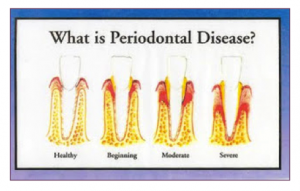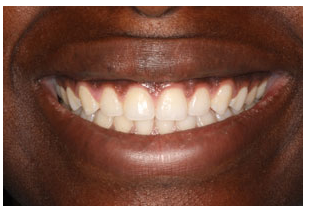Practices to Help Maintain Gums
July 14th, 2014
 One of the toughest issues when it comes to oral care is keeping your gums healthy. Throughout the years, you may have noticed that your gums can start to recede, moving farther down and revealing more of your teeth. This can be due to genetics or harmful bacteria and plaque that build up and weaken your gums. It can also be a form of gum disease that will result in sore gums, redness, and eventually bleeding.
One of the toughest issues when it comes to oral care is keeping your gums healthy. Throughout the years, you may have noticed that your gums can start to recede, moving farther down and revealing more of your teeth. This can be due to genetics or harmful bacteria and plaque that build up and weaken your gums. It can also be a form of gum disease that will result in sore gums, redness, and eventually bleeding.
To help save your gums and keep them healthy, here a few practices that Water Tower Dental recommends:
Brushing and Flossing regularly
Believe it or not, this is the easiest way to help maintain gums. Try brushing after every meal and flossing once a day to help keep your mouth clear of plaque and unwanted food. But also realize that you can brush and floss too much. Your mouth needs time to balance its own natural chemistry, so keep to a good schedule and don’t overdo it. Flossing is not necessary more than once a day. And don’t think you need to brush after every time you eat food. It’s good to brush after larger meals, but small snacks throughout the day can be washed away with a glass of water and your body’s natural saliva distribution.
Use Mouthwash
Along with brushing and flossing, using a strong mouthwash once a day can also help kill unwanted bacteria and keep your mouth feeling fresh. Mouthwash is great for stopping plaque growth in areas where the toothbrush or even floss can’t reach.
Eat Probiotics
We reported before on how probiotics can help your teeth. Eating them a few times a month can actually help maintain your gums too. Probiotics are a collection of good bacteria. When you eat them, you replace areas where bad bacteria can live with bacteria that helps your mouth. Eating probiotics a few times a month will help keep your mouth’s chemistry regulated and healthy.
Keep Juices, Coffee, and Acidic Drinks to Meal Time
When trying to keep your gums at a strong level, you need to avoid some of the more harmful substances to your teeth. Acidic drinks, such as high-sugar juices, soda, and coffee, can ultimately do bad damage to your teeth and gums. However, they are most harmful when they’re consumed alone. This is the best time for the acidic elements to move around your mouth. During a mealtime though, much of your food can soak up the acidic juice and keep it from causing too much harm. Also, when you eat, your mouth naturally salivates, which helps wash away food bits and the juice
Take Vitamin C and D
Both vitamins are great for oral health. Vitamin C contains antioxidants that help replace connective tissues and accelerate bone regeneration. Vitamin D has been known to have anti-inflammatory effects and can help reduce your gums’ chance of developing periodontal disease.
Visit Your Dentist Regularly
And last, a terrific way to help keep your teeth clean and maintain your gums is by consulting and working with your dentist to find practices that will work for you. Also, an oral cleaning from the dentist is an amazing way to start a strong regiment against gum decay and periodontal disease.
If you’re having trouble with receding gums or suspect you have periodontal disease, do not hesitate to call Water Tower Dental. We can help you find the right track to a healthier lifestyle that will repair your gums and make your smile shine. For more questions, contact Water Tower Dental today.

 To keep a healthy smile, one must focus on the gums just as much as their teeth. Without proper care, gums can harbor many harmful types of bacteria that can result in gum disease. We already listed the best ways for
To keep a healthy smile, one must focus on the gums just as much as their teeth. Without proper care, gums can harbor many harmful types of bacteria that can result in gum disease. We already listed the best ways for  When people think of dental hygiene, they often only focus on the teeth. That's what most people see, right? Bright, white, straight teeth are the goal. However, most people neglect to consider how important it is to take care of your gums properly. While sore, sensitive gums can occur from lack of brushing and proper care, the gum's biggest threat is Periodontal Disease, or Gum Disease. According to the National Institute of Dental and Craniofacial Research, over
When people think of dental hygiene, they often only focus on the teeth. That's what most people see, right? Bright, white, straight teeth are the goal. However, most people neglect to consider how important it is to take care of your gums properly. While sore, sensitive gums can occur from lack of brushing and proper care, the gum's biggest threat is Periodontal Disease, or Gum Disease. According to the National Institute of Dental and Craniofacial Research, over 




 Website Powered by Sesame 24-7™
Website Powered by Sesame 24-7™